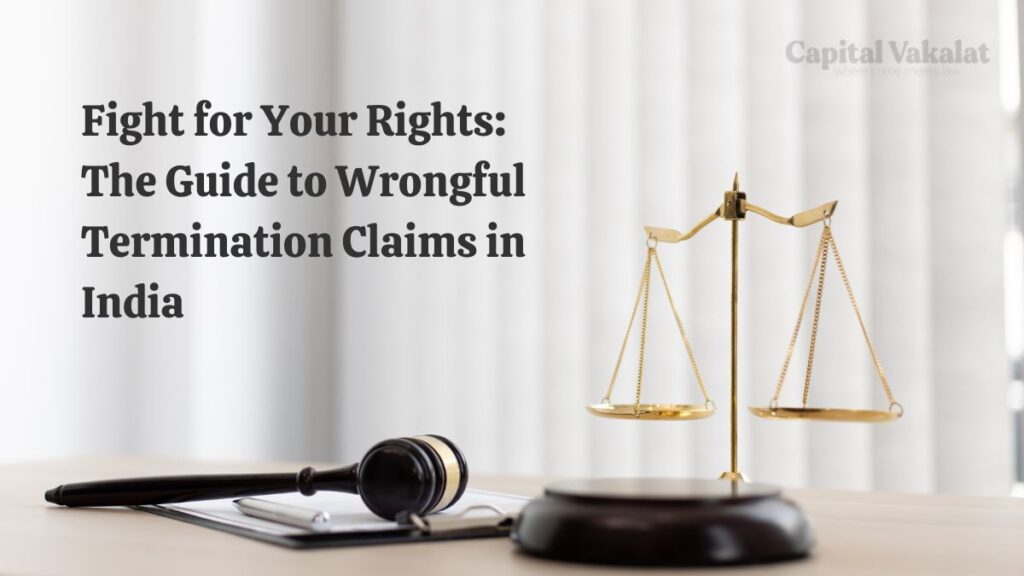In the ever-evolving landscape of employment, wrongful termination has become a pressing concern for employees across various industries in India. Wrongful termination refers to the unlawful dismissal of an employee by an employer, often in violation of labor laws and employment agreements.

This article aims to guide individuals through the process of reporting wrongful termination in India, ensuring that their rights are upheld and justice is served.
Understanding Wrongful Termination
Defining Wrongful Termination
Before delving into the reporting process, it’s crucial to grasp the concept of wrongful termination. Wrongful termination occurs when an employee is fired for reasons that contravene legal protections, such as discrimination, retaliation, or breach of contract.
Recognizing Signs of Wrongful Termination
Identifying wrongful termination can be challenging, but some common signs include abrupt dismissal without valid cause, termination following a workplace dispute, or being let go after reporting harassment or discrimination.
Steps to Report Wrongful Termination
1. Consult Your Employment Agreement
Review your employment contract to understand the terms of your engagement, including notice periods, grounds for termination, and dispute resolution mechanisms.
2. Gather Documentation
Collect any documents related to your employment, such as offer letters, payslips, performance reviews, and communication with your employer. These records can serve as valuable evidence.
3. Approach Your Employer
Initiate a conversation with your employer to discuss the circumstances surrounding your termination. Keep the lines of communication open and seek clarification on the reasons for your dismissal.
4. Contact Labor Authorities
If your employer is unresponsive or uncooperative, you can reach out to the appropriate labor authorities, such as the Labor Commissioner’s office or the Industrial Tribunal, depending on your state.
5. File a Complaint
Prepare a formal written complaint outlining the details of your case and the reasons you believe your termination was wrongful. Submit this complaint to the relevant labor authority.
6. Mediation and Conciliation
In some cases, the labor authorities may suggest mediation or conciliation to resolve the dispute amicably. This involves a neutral third party assisting both parties in reaching a settlement.
7. Pursue Legal Action
If mediation fails to yield results, you may choose to pursue legal action by filing a lawsuit against your former employer. It’s advisable to seek legal counsel to navigate the complexities of the legal process.
Your Rights in Wrongful Termination Cases
Rights Against Discrimination
Indian labor laws prohibit termination based on factors such as gender, religion, caste, or disability. If you suspect discrimination played a role in your termination, you have the right to challenge it.
Rights to Compensation
If your termination is found to be wrongful, you may be entitled to compensation, including back pay, reinstatement, and damages for emotional distress.
Conclusion
Reporting wrongful termination in India is a process that demands vigilance, determination, and a clear understanding of your rights. By following the steps outlined in this article, you can assert your legal rights and seek justice if you believe you have been wrongfully terminated. Remember, you are not alone in this journey, and the law is on your side to ensure a fair resolution.
FAQs
Can I report wrongful termination without legal representation?
While legal representation is not mandatory, it can significantly enhance your chances of a successful resolution.
How long does the reporting process typically take?
The duration varies depending on factors such as the complexity of the case and the efficiency of the legal system in your state.
What remedies can I seek if my termination is deemed wrongful?
Remedies may include reinstatement, back pay, compensation for damages, and legal fees.
Can I report wrongful termination after a long time has passed?
It’s advisable to report the incident as soon as possible, as there may be time limitations on filing complaints.